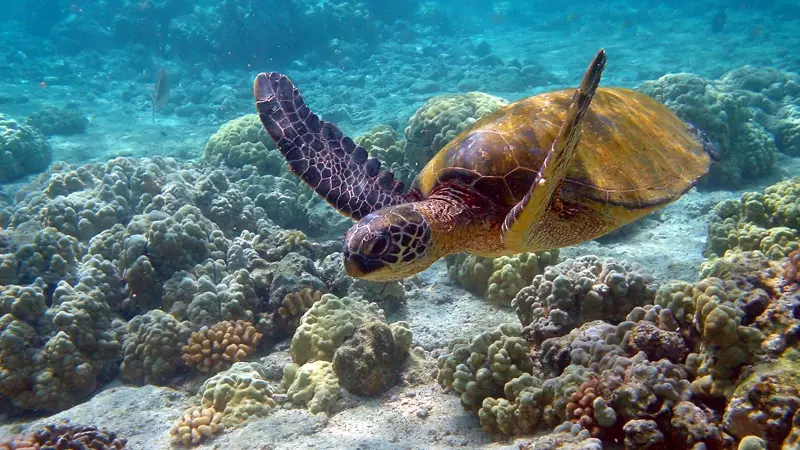
For many wildlife enthusiasts in India, the terms 'turtle' and 'tortoise' are used interchangeably. However, these fascinating reptiles, while belonging to the same scientific order, Testudines, have evolved along distinctly different paths. Their survival strategies have shaped everything from their physical form to their daily habits, creating two unique branches of the same ancient family tree.
Home Turf: Water Worlds vs. Land Kingdoms
The most fundamental difference lies in their preferred environment. Turtles are aquatic creatures, spending the majority, if not all, of their lives in or around water bodies. You can find them in ponds, rivers, and across the vast oceans. Their bodies are perfectly adapted for this lifestyle, featuring streamlined shells and webbed feet for efficient paddling. Sea turtles take this a step further, having evolved flippers that make them powerful, graceful swimmers.
In stark contrast, tortoises are exclusive land-dwellers. You will never see a tortoise swimming in a lake or river. They are built for terrestrial life, with stout, column-like legs designed for walking steadily across varied terrain and for digging burrows. Their anatomy is a clear rejection of the aquatic life their turtle cousins lead.
Anatomy and Physical Build: Streamlined vs. Domed
A quick glance at their shells can instantly help you tell them apart. A turtle's shell is typically flatter and more streamlined, a design that minimizes water resistance and allows for agile swimming. This lightweight build contributes to their overall agility.
Tortoises, however, carry high-domed, heavy, and often rugged shells. These act as formidable armor, protecting them from predators on land. This bulky, sturdy build makes them slower but incredibly resilient, truly resembling little walking fortresses.
Diet and Lifespan: Omnivores vs. Herbivores
Their diets are a direct reflection of their habitats. Turtles are generally omnivores, with a flexible menu that can include aquatic plants, insects, small fish, and in the case of some sea turtles, even jellyfish. This varied diet suits their active, aquatic existence.
Tortoises, with their slower pace of life, are primarily herbivores. They thrive on a diet of leafy greens, grasses, fruits, and in arid regions, even moisture-rich cacti. Their plant-based diet is perfectly suited for their land-based, methodical lifestyle.
When it comes to longevity, the tortoise is the undisputed champion. While many turtle species live for a respectable 20 to 40 years, with some sea turtles reaching 60 or more, tortoises are in a league of their own. Some tortoise species have been known to live well past 150 years, embodying the 'slow and steady' philosophy.
Unique Survival Adaptations
Both animals have developed incredible survival tricks. Some freshwater turtle species are capable of cloacal respiration, a process where they can absorb oxygen from water through a specialized area near their tail. Sea turtles have glands that help them excrete excess salt, which can sometimes look like they are crying.
Tortoises may not have such flashy biological tricks, but they are expert diggers, capable of creating extensive burrows to escape extreme heat or cold. This skill allows them to thrive in some of the world's most challenging environments, including deserts.
Understanding these differences not only satisfies curiosity but also deepens our appreciation for the diverse ways life adapts and thrives on our planet. The next time you spot one of these shelled reptiles, you'll know exactly whether you're looking at a water-loving turtle or a land-roaming tortoise.





